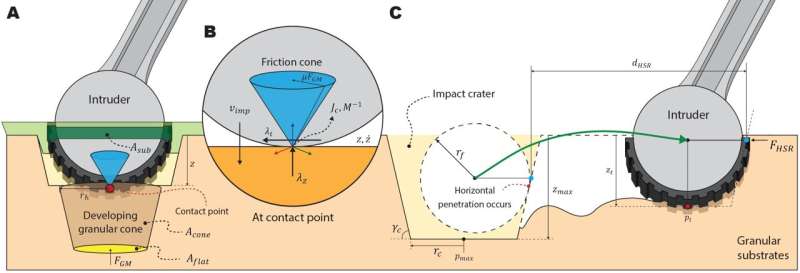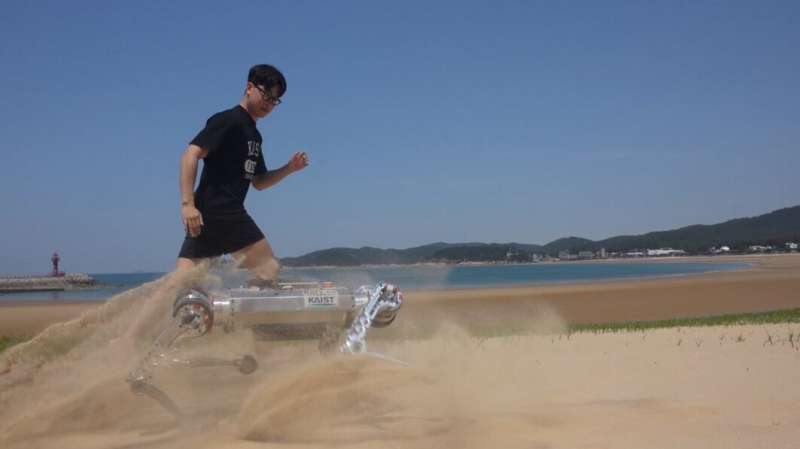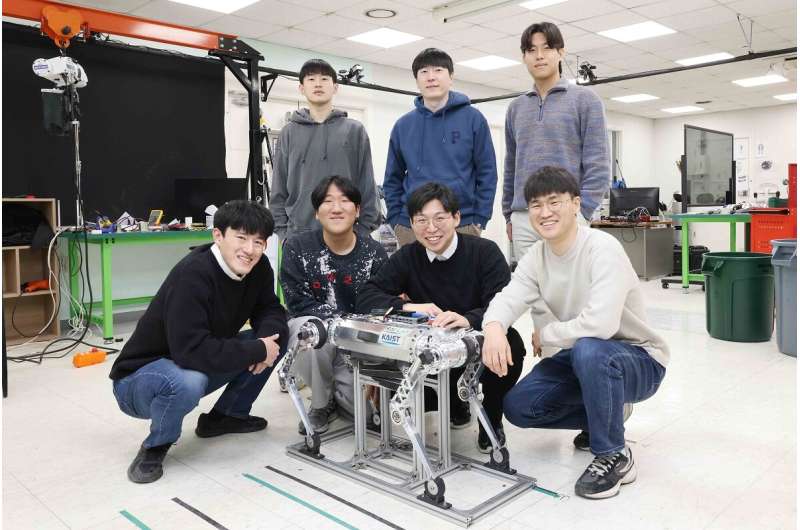RaiBo: A versatile robo-dog that runs through a sandy beach at 3 meters per second
A research team led by Professor Hwangbo Jemin of the KAIST Department of Mechanical Engineering has developed a quadrupedal robot control technology that can walk robustly with agility even in deformable terrain such as a sandy beach.
Professor Hwangbo’s research team developed a technology to model the force received by a walking robot on the ground made of granular materials such as sand and simulated it via a quadrupedal robot. Also, the team worked on an artificial neural network structure that was capable of making real-time decisions to adapt to various types of ground surfaces without prior information while walking at the same time and applied it to reinforcement learning.
The trained neural network controller is expected to expand the scope of quadrupedal walking robots by proving its robustness in changing terrain, including the ability to move at high-speed even on a sandy beach and walk and turn on soft grounds like an air mattress without losing balance.
This research, with Ph.D. Student Soo-Young Choi of KAIST Department of Mechanical Engineering as the first author, was published in January in Science Robotics, titled “Learning quadrupedal locomotion on deformable terrain.”
Reinforcement learning is an AI learning method used to create a machine that collects data on the results of various actions in an arbitrary situation and utilizes that set of data to perform a task. Because the amount of data required for reinforcement learning is so vast, a method of collecting data through simulations that approximates physical phenomena in the real environment is widely used.

In particular, learning-based controllers in the field of walking robots have been applied to real environments after learning through data collected in simulations to successfully perform walking controls in various terrains.
However, since the performance of the learning-based controller rapidly decreases when the actual environment has any discrepancy from the learned simulation environment, it is important to implement an environment similar to the real one in the data collection stage. Therefore, in order to create a learning-based controller that can maintain balance in a deforming terrain, the simulator must provide a similar contact experience.
The research team defined a contact model that predicted the force generated upon contact from the motion dynamics of a walking body based on a ground reaction force model that considered the additional mass effect of granular media defined in previous studies.
Furthermore, by calculating the force generated from one or several contacts at each time step, the deforming terrain was efficiently simulated.

The research team also introduced an artificial neural network structure that implicitly predicts ground characteristics by using a recurrent neural network that analyzes time-series data from the robot’s sensors.
The learned controller was mounted on the robot RaiBo, which was built by the research team to show high-speed walking of up to 3.03 meters/second on a sandy beach where the robot’s feet were completely submerged in the sand. Even when applied to harder grounds, such as grassy fields and a running track, RaiBo was able to run stably by adapting to the characteristics of the ground without any additional programming or revision to the controlling algorithm.
In addition, it rotated with stability at 1.54 rad/s (approximately 90° per second) on an air mattress and demonstrated this quick adaptability even in the situation in which the terrain suddenly turned soft.
The research team demonstrated the importance of providing a suitable contact experience during the learning process by comparison with a controller that assumed the ground to be rigid, and proved that the proposed recurrent neural network modifies the controller’s walking method according to the ground properties.

The simulation and learning methodology developed by the research team is expected to contribute to robots performing practical tasks as it expands the range of terrains that various walking robots can operate on.
First author Suyoung Choi said, “It has been shown that providing a learning-based controller with a close contact experience with real deforming ground is essential for application to deforming terrain.” He went on to add that “The proposed controller can be used without prior information on the terrain, so it can be applied to various robot walking studies.”
More information:
Suyoung Choi et al, Learning quadrupedal locomotion on deformable terrain, Science Robotics (2023). DOI: 10.1126/scirobotics.ade2256
Citation:
RaiBo: A versatile robo-dog that runs through a sandy beach at 3 meters per second (2023, January 26)
retrieved 26 January 2023
from https://techxplore.com/news/2023-01-raibo-versatile-robo-dog-sandy-beach.html
This document is subject to copyright. Apart from any fair dealing for the purpose of private study or research, no
part may be reproduced without the written permission. The content is provided for information purposes only.
For all the latest Technology News Click Here
For the latest news and updates, follow us on Google News.
